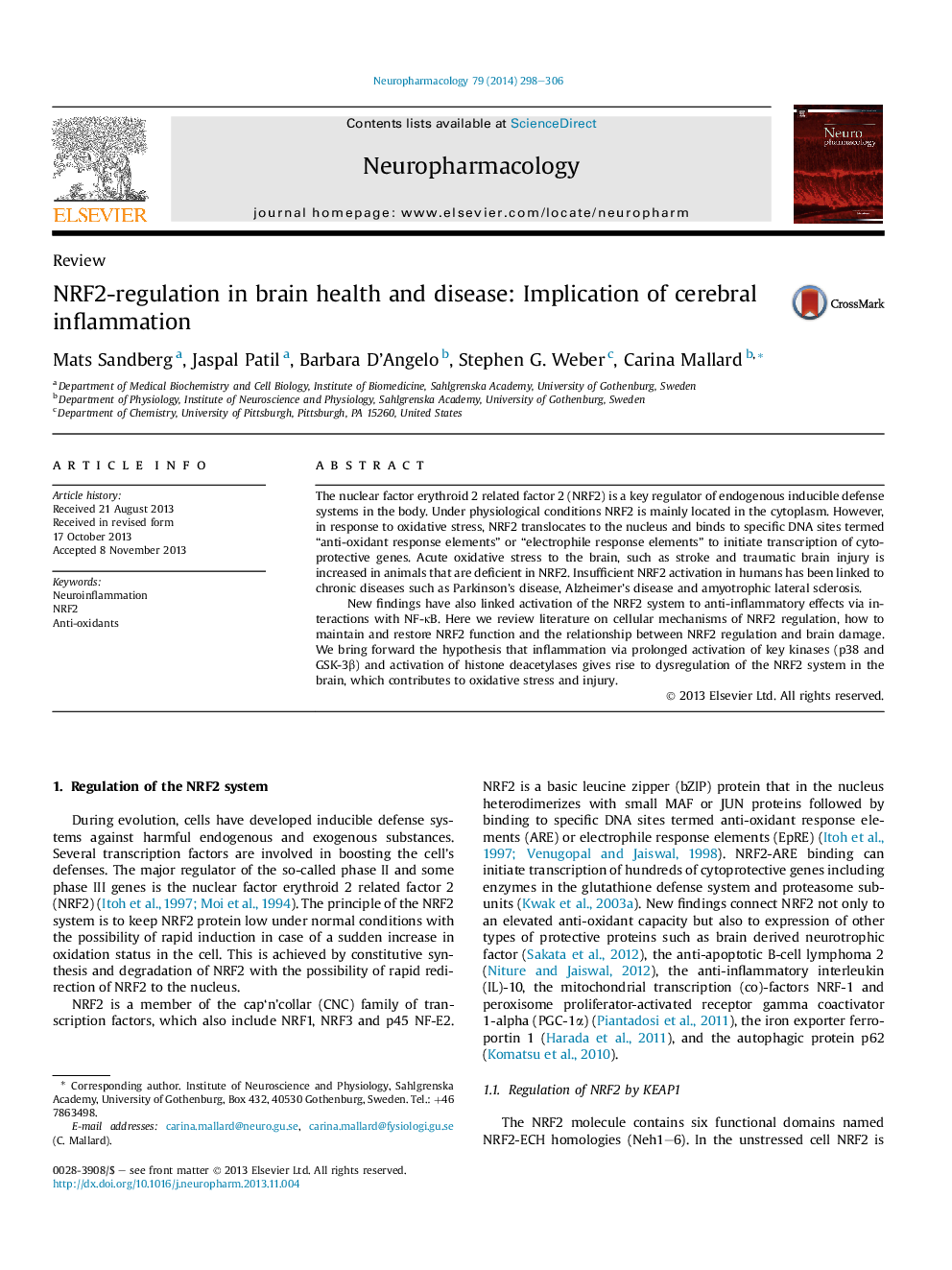| کد مقاله | کد نشریه | سال انتشار | مقاله انگلیسی | نسخه تمام متن |
|---|---|---|---|---|
| 5814547 | 1556635 | 2014 | 9 صفحه PDF | دانلود رایگان |

- Prolonged inflammation induces key kinases, p38 and GSK-3β.
- Prolonged inflammation activates histone deacetylases.
- Prolonged inflammation contributes to oxidative damage via dysregulation of Nrf2.
The nuclear factor erythroid 2 related factor 2 (NRF2) is a key regulator of endogenous inducible defense systems in the body. Under physiological conditions NRF2 is mainly located in the cytoplasm. However, in response to oxidative stress, NRF2 translocates to the nucleus and binds to specific DNA sites termed “anti-oxidant response elements” or “electrophile response elements” to initiate transcription of cytoprotective genes. Acute oxidative stress to the brain, such as stroke and traumatic brain injury is increased in animals that are deficient in NRF2. Insufficient NRF2 activation in humans has been linked to chronic diseases such as Parkinson's disease, Alzheimer's disease and amyotrophic lateral sclerosis.New findings have also linked activation of the NRF2 system to anti-inflammatory effects via interactions with NF-κB. Here we review literature on cellular mechanisms of NRF2 regulation, how to maintain and restore NRF2 function and the relationship between NRF2 regulation and brain damage. We bring forward the hypothesis that inflammation via prolonged activation of key kinases (p38 and GSK-3β) and activation of histone deacetylases gives rise to dysregulation of the NRF2 system in the brain, which contributes to oxidative stress and injury.
Journal: Neuropharmacology - Volume 79, April 2014, Pages 298-306